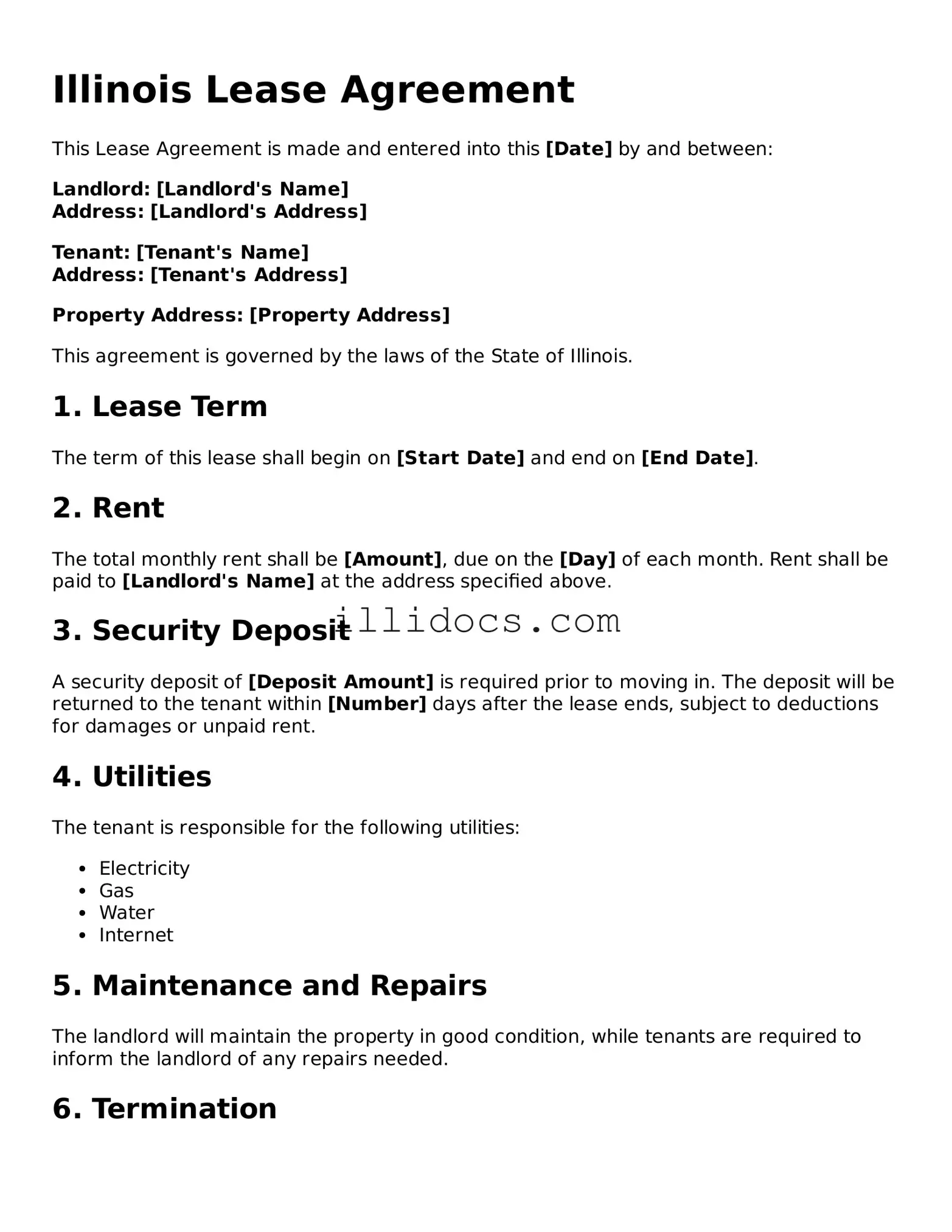What is an Illinois Lease Agreement form?
An Illinois Lease Agreement form is a legal document that outlines the terms and conditions under which a landlord rents out property to a tenant. This agreement includes details such as the rental amount, payment due dates, lease duration, and responsibilities of both parties. It serves to protect the rights of both the landlord and tenant, ensuring a clear understanding of their obligations.
What should be included in the Illinois Lease Agreement?
The Illinois Lease Agreement should include several key elements. First, it should clearly identify the landlord and tenant, including their contact information. Next, it should specify the property address and describe the rental unit. Additionally, the agreement must outline the lease term, whether it is month-to-month or for a fixed period, and detail the rent amount and payment schedule. Important clauses regarding security deposits, maintenance responsibilities, and rules regarding pets or guests should also be included.
How can a tenant terminate an Illinois Lease Agreement?
To terminate an Illinois Lease Agreement, a tenant must provide written notice to the landlord. The notice period typically depends on the type of lease. For month-to-month leases, a 30-day notice is usually required. For fixed-term leases, tenants may need to wait until the lease expires unless there are specific provisions allowing early termination. It's important to check the lease for any specific termination clauses and follow them carefully to avoid potential penalties.
What happens if a tenant does not pay rent on time?
If a tenant fails to pay rent on time, the landlord may take several actions. Initially, the landlord might issue a late fee, as specified in the lease agreement. If the rent remains unpaid, the landlord can send a notice to the tenant, giving them a specific timeframe to pay the overdue rent. If payment is still not made, the landlord may begin the eviction process. It's crucial for tenants to communicate with their landlord if they are facing financial difficulties to explore possible solutions.
